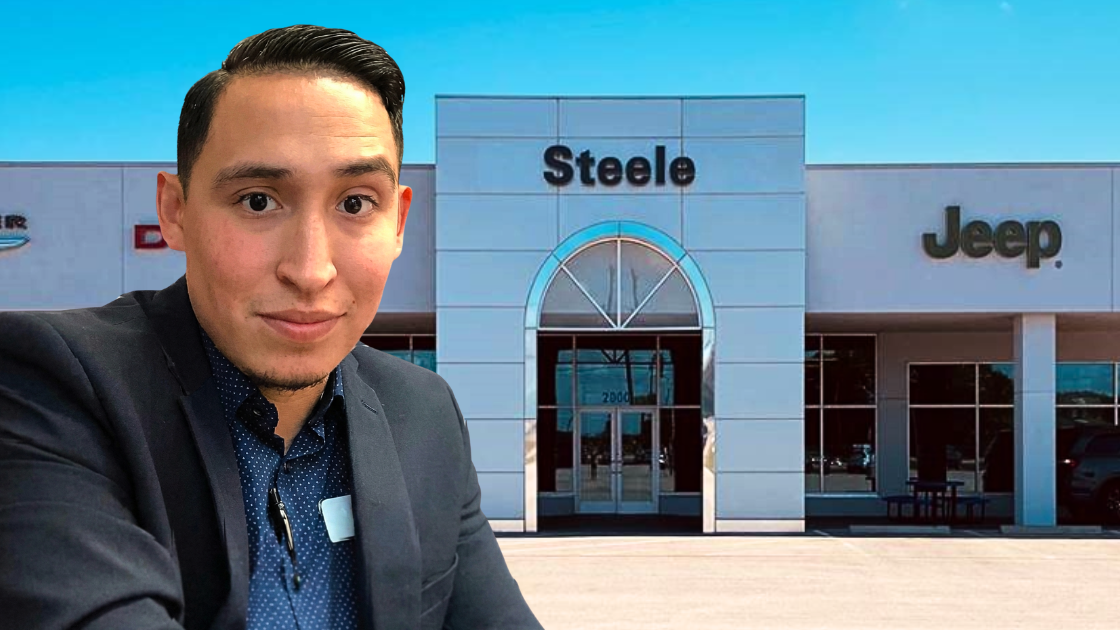
Welcome to another edition of the Car Dealership Guy Podcast Recap newsletter.
In this episode, I speak to Andrew Wright, Managing Partner of Vinart Dealerships, about how rising new car inventory continues to pressure many dealers and why automakers could do more to help. Andrew’s group represents a mix of five luxury and mass-market import brands, including Acura, Honda, Hyundai, Mercedes-Benz, and Porsche.

1. Auto retail is driven by a mutually beneficial partnership between the OEM and dealer.
Ongoing conversations are critical to the success of factory and dealer partnerships in the changing market.
”It's important that we continue to have dialogue, that we continue to talk, even in moments of disagreement, whether they be significant disagreements or whether they be, you know, smaller, more minor disagreements.”
The fortunes of both the automaker and dealer are tied to one another.
2. More should be sounding the alarm about the current market challenges.
The obstacles right now stem from vehicles being too expensive and incentives not being robust enough to attract people who have been sitting on the sidelines back into the marketplace.
“We're now in an oversupplied, overpriced market. And that's a dangerous combination,” excluding brands like Toyota and Honda that have done a relatively good job at striking the right balance between supply and demand.”
Those challenges really come to light at the top end of the market, where a new Mercedes S 580 costs $145,000 ($3,000 lease), up from $100,000 ($1,800 a month lease) for a comparable model in 2018, when Andrew bought his Mercedes store.
3. The signs that margin compression will continue are everywhere.
It’s hard to see how margins could compress further, but given the current market conditions, they might do just that.
“I…think that margin compression is going to continue to be a very real thing, not only for dealers but for OEMs.”
The guidance reports that the OEMs are issuing are a telltale sign of where things are headed.
4. OEMs need to make some tough decisions for the continued success of the partnership.
If the OEMs aren’t going to offer higher incentives, they are going to have to cut production.
“We need to do what it takes to juice demand, to increase velocity at retail. And if that needs to be a combination of higher incentives and…reduced production, then so be it. But the latter is not very popular with our OEM friends. And I get that. But in the absence of doing that, then they got to step up and give us more incentives.”

1. Phone Ninjas - Is your store missing opportunities before they even hit the lot? Phone Ninjas helps dealers maximize every opportunity with custom scripts and critical coaching on actual customer calls. Get your team certified today and watch your appointment set and show rates double! Visit phoneninjas.com to start winning today!
2. Impel - Impel AI helps you drive loyalty with proactive, personalized service outreach that scales seamlessly. From service milestones to recall alerts and tailored incentives, Impel makes service outreach feel more like a concierge experience than traditional marketing. With AI-powered service scheduling via text and email, your team can stop managing calendars and start focusing on delivering exceptional customer experiences. Future-proof your service drive today. Learn more at carguymedia.com/41G1unN.
3. CDG Recruiting – The Go-To Talent Partner for Dealers. Hire pre-vetted GMs, sales, F&I, fixed ops, C-suite, and back-office talent—ready to perform. Faster hires, better results. Book a call → CDGRecruiting.com.
5. Improved leasing programs could help to stop the bleeding.
Companies like Honda, Toyota, and Mercedes-Benz have historically had very robust and sizable lease portfolios.
“We got to get back to those days…That not only helps solve the current problem with oversupply, but it also helps to solve the problem in due course with not having enough pre-owned inventory for our certified pre-owned programs.”
It's also a mechanism for bringing first-time buyers into brands that will then patronize the service departments.
6. Changing the perception of leasing could unlock more sales.
There's a large subset of the population that has a very negative perception of leasing.
“I produced a video…where I was talking about common objections I hear about leasing. And the one that I hear is that, ‘Well, I don't own the car.’ There's an element of truth to that…But if you come in and you buy a car from me, and you finance it for 72 months, three years into that loan, you still don't own the car.”
Providing consumers with a better understanding of the leasing process is a good place to start, which could be a powerful strategy for dealers.
7. Overcoming negative equity isn’t an easy hurdle to clear.
Negative equity continues to be a challenge for customers that are not going to lease.
“We overcome negative equity with either dealer cash or rebates. And that's just what it's going to take in order to overcome that objection and get people's payments to a point where they find them palatable enough to pull the trigger, trade in their current vehicle, and get into a new one.”
It boils down to where manufacturers want to give dealers the resources to be competitive and stir the demand necessary to increase velocity.
8. ‘Deceptive pricing’ on third-party marketplace sites needs to be addressed.
Concerns like listing a vehicle at a certain price, with trade-in and finance stipulations, can and should be addressed because it’s “deceptive.”
“By deceptive pricing, I mean a price shows up on a third-party listing site for a car in a dealer's inventory that is $30,000. That same car on their website is priced at $30,000, but it has a little asterisk or an eye with a bubble that you click on. And it basically says, ‘the price is $30,000 unless you don't have a trade, then it's $31,500. And if you decide not to finance with us, it goes to $33,000.’”
Deal rating added fuel to the fire because price is the dominant factor, despite the claims of third-party market listing sites that they also take into account factors like ratings and reviews.
9. These tactics are just as detrimental to dealers.
The issue is that many third-party sites also sell software that dealers use to appraise, value, market, and merchandise their cars with information that is “scrubbed or scraped” from these third-party listing sites.
“When I take a car in on trade, and I go to assess the marketplace to determine what I believe I can sell that car for, the representative data sets that are presented to me as substantiation for where I should price that car are inclusive of pricing that is deceptive, and that is not accurate.”
The standards for third-party listings need to be improved, with more robust monitoring systems in place.
10. OEMs can’t seem to help themselves when it comes to micromanaging.
Technology is one of the clearest examples of how OEMs are veering out of their lane.
“Unfortunately, our OEM colleagues have taken it upon themselves to really insert themselves into the retail process. The reason that they're doing that is really twofold. Number one, they'd like some insight into what is happening at retail. Number two, they think that some of my fellow dealer colleagues are not up to the task when it comes to modernizing sales processes and doing stuff like that.”
OEMs should stick to designing and building the vehicles and let dealers retail the cars.
Did you enjoy this edition of the Podcast Recap newsletter?
Interested in advertising with Car Dealership Guy? Drop us a line here.
Want to be considered as a guest on the podcast? Add your name here.








